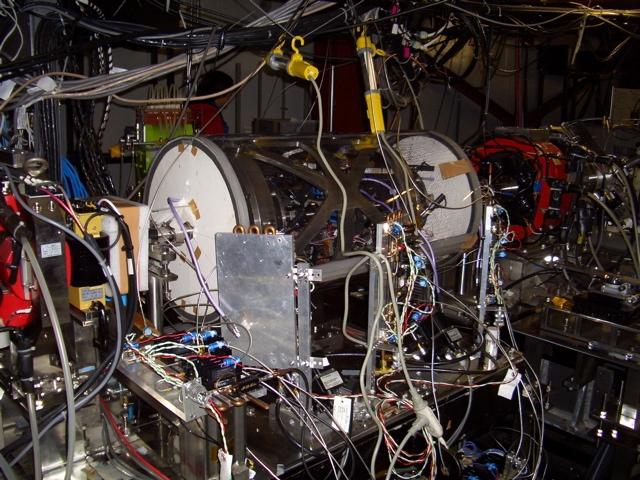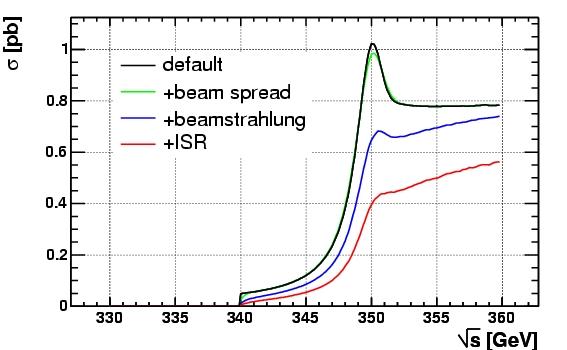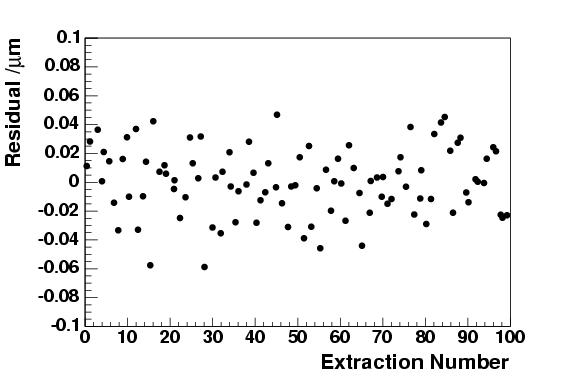Cambridge LC-ABD/EuroTeV Group - Home Page
Mark Slater, Mark Thomson, David Ward
The ILC and accelerator physics
From 2004-2008 we were members of LC-ABD which is a UK-based collaboration which is carrying out R&D for the International Linear Collider (ILC) , and EuroTEV which is a similar EU-funded consortium. The main focus of the UK accelerator physics effort for the ILC is the beam delivery system - the stage in which the high energy (up to 0.5 TeV) electron and positron beams are focussed to a size of the order of nanometres and brought into collision. This process needs a range of state-of-the art diagnostic systems.
Spectrometry
The specific Cambridge interest is in spectrometry for the precise determination of beam energy. This is important for many physics measurements at the ILC; especially for the precise determination of particle masses. An example is the mass of the top quark. A scan of the cross-section as the t-tbar threshold is crossed is a very sensitive way of determining the mass, but it does rely on an accurate knowledge of the absolute beam energy, its spread, and its stability with time.
The basic idea of a spectrometer for the ILC is to pass the beam through a chicane of precisely calibrated magnets, and to determine the deflection of the beam using highly precise beam position monitors (BPMs). The BPMs need to achieve an accuracy and long-term stability of order 100 nm. Cavity BPMs, i.e. resonant r.f. cavities embedded in the beam line, have the potential to achieve nanometre precision. We use the dipole TM mode of the cavity, which is excited if the beam passes off-axis with an amplitude proportional to displacement.
R&D work at Cambridge
We have been working in two projects in the framework of international collaborations. The NanoBPM group was performing a number of fundamental studies of cavity BPMs in the ATF beam line at KEK, Japan. Cambridge particularly focussed on issues of stability and resolution, which are key for spectrometry. This work showed that resolutions of order 25 nm at the required stability level can be observed over a two hour period. See this Paper
A more realistic test of a spectrometer-like system including BPMs and a chicane of magnets was provided by the T474 group using End Station A at SLAC. A number of different BPM designs will eventually be tested. A first commissioning run was successfully carried out in January 2006, and further data taking was carried out through 2006-2007. Cambridge was responsible for the main publication describing the analysis of these data.



